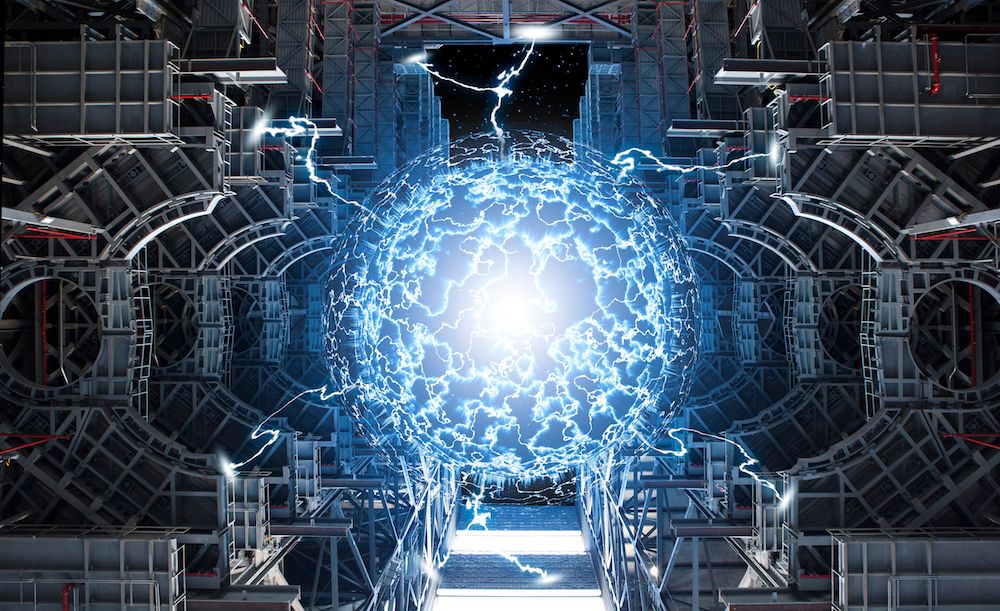In 2025, the global race toward practical fusion energy is gaining unprecedented momentum. At the heart of this revolution lies a breakthrough technology quietly changing the game: high-temperature superconductors (HTS). These advanced materials, capable of conducting electricity without resistance at higher temperatures than traditional superconductors, are becoming a cornerstone of next-generation compact fusion reactors.
From Oxford to Boston, labs and startups are deploying HTS to radically shrink the size and cost of fusion systems without sacrificing performance. And with mounting pressure to meet decarbonization goals, HTS may hold the key to unlocking a future of clean, limitless energy sooner than expected.
What Are High-Temperature Superconductors (HTS)?
Unlike conventional superconductors that operate near absolute zero, HTS materials function at relatively higher temperatures—typically around -135°C (138K). This makes them easier and cheaper to cool using liquid nitrogen or helium. First discovered in the 1980s, HTS materials have seen exponential improvements in quality, cost, and scalability.
Today, the most widely used HTS materials include rare-earth barium copper oxides (REBCO) and yttrium barium copper oxide (YBCO) compounds. These materials can carry massive currents and withstand high magnetic fields, making them ideal for use in magnetic confinement fusion systems.
Fusion and Magnetic Confinement: The Role of HTS
To achieve fusion, atoms must be heated to hundreds of millions of degrees—hotter than the core of the sun—and confined long enough to collide and fuse. Tokamaks, doughnut-shaped magnetic chambers, have long been the primary design for this purpose.
The challenge is generating magnetic fields strong enough to contain such extreme plasma without requiring immense space or power. This is where HTS changes the equation.
HTS materials allow the creation of more powerful magnetic fields in more compact coils. This means tokamaks can be made smaller, cheaper, and more energy efficient—without compromising confinement performance. It also makes modular, scalable fusion systems more practical.
Commonwealth Fusion Systems: Leading the HTS Revolution
Commonwealth Fusion Systems (CFS), a spinout from MIT, is among the most watched companies in the global fusion race. In September 2021, CFS achieved a historic milestone: using HTS magnets to create a magnetic field of 20 teslas—the strongest ever produced by a compact fusion magnet.
This breakthrough validated SPARC, CFS’s compact fusion pilot project slated for operation by 2025. Unlike large-scale megaprojects like ITER, SPARC aims to demonstrate net energy gain in a much smaller footprint. HTS is the core enabler of this design.
CFS’s strategy is bold but focused. By combining HTS magnets with advances in plasma modeling and materials science, the company believes it can bring commercial fusion power to the grid by the early 2030s—a full decade ahead of traditional timelines.
As of 2025, CFS has raised over $2 billion from investors including Breakthrough Energy Ventures, Bill Gates, and Equinor. Construction of the SPARC facility in Devens, Massachusetts, is nearing completion, with early plasma shots expected within months.
Global Momentum: Fusion Startups and Public Labs
The excitement around HTS isn’t limited to CFS. Globally, more than 35 private fusion startups have raised over $6 billion in cumulative funding, and many are exploring HTS-based designs.
Companies like Tokamak Energy (UK), Helion Energy (USA), and TAE Technologies (USA) are investing in alternative fusion concepts—many of which rely on HTS for scaling their designs.
Meanwhile, public labs like Japan’s National Institutes for Quantum Science and Technology and South Korea’s KSTAR program are incorporating HTS into next-generation test reactors. Even ITER, the world’s largest fusion experiment, is studying HTS upgrades despite being based on older low-temperature magnet designs.
HTS is thus a unifying trend across both public and private sectors, offering a common pathway to more agile and realistic fusion engineering.
Engineering Advantages of HTS Fusion Magnets
The benefits of HTS in fusion extend beyond compactness:
- Energy Efficiency: HTS magnets reduce ohmic losses, meaning less energy is lost as heat. This improves overall reactor efficiency.
- Radiation Tolerance: HTS materials are generally more resistant to neutron radiation, extending the lifespan of core components.
- Reduced Cooling Burden: Operating at higher temperatures lowers the cost and complexity of cryogenic systems.
- Scalability: Smaller coils mean faster construction and potential for modular deployment.
Together, these advantages create an ecosystem where fusion becomes not just technically feasible, but commercially viable.
Challenges and Open Questions
Despite the promise, HTS integration isn’t without hurdles. Manufacturing HTS tapes at scale remains costly. Engineering stable, long-duration superconducting magnets still requires innovation in cooling and quench protection.
Moreover, fusion power systems must solve other issues too: plasma instability, materials durability under neutron bombardment, and regulatory acceptance. HTS helps solve the magnet problem—but the path to fusion electricity also runs through reactor integration and grid interconnection.
Still, each technical success brings momentum. In April 2025, CFS announced its HTS magnets operated continuously for over 200 hours without quenching. That kind of performance marks a turning point.
The Economics of Compact HTS Fusion
The HTS revolution is reshaping fusion economics:
- Lower CapEx: Smaller reactors mean cheaper facilities.
- Faster Timelines: Compact reactors can be built in 2–3 years, compared to decades for traditional facilities.
- Distributed Power: HTS-enabled fusion plants could serve regional grids, industrial clusters, or desalination plants.
According to BloombergNEF, a successful HTS compact fusion reactor could deliver electricity at 6–8 cents per kWh by the mid-2030s. That puts it within range of renewables—but with the added benefit of baseload, non-weather-dependent power.
The implications for global energy markets, climate goals, and energy equity are enormous.
Why It Matters Globally
Fusion energy has always been a dream of scientists. But HTS is turning it into a business case. For countries like India, China, and the UAE, where energy demand is growing rapidly, fusion offers a pathway to decarbonization without sacrificing industrial growth.
HTS also offers geopolitical benefits. Fusion reactors don’t require fuel imports. That means greater energy sovereignty and less dependency on fossil exporters.
If compact HTS reactors reach commercialization by the 2030s, they could join solar, wind, and nuclear in a balanced energy portfolio—and dramatically reduce reliance on coal and gas.
Final Thoughts:
The journey to fusion energy has been long, complex, and filled with setbacks. But 2025 marks a genuine inflection point. Thanks to HTS, fusion is no longer confined to 50-year roadmaps and government-only experiments.
Companies like Commonwealth Fusion Systems are proving that with the right materials, the right engineering, and the right ambition, a fusion-powered world may be closer than we think.
Mattias Knutsson, a global procurement and infrastructure strategist, puts it well: “HTS is more than a material innovation—it’s a system enabler. In fusion, it transforms what’s possible into what’s practical.”
For investors, governments, and innovators alike, the message is clear: fusion isn’t just a scientific goal. It’s a commercial race. And HTS may be the secret weapon that helps humanity win it.





